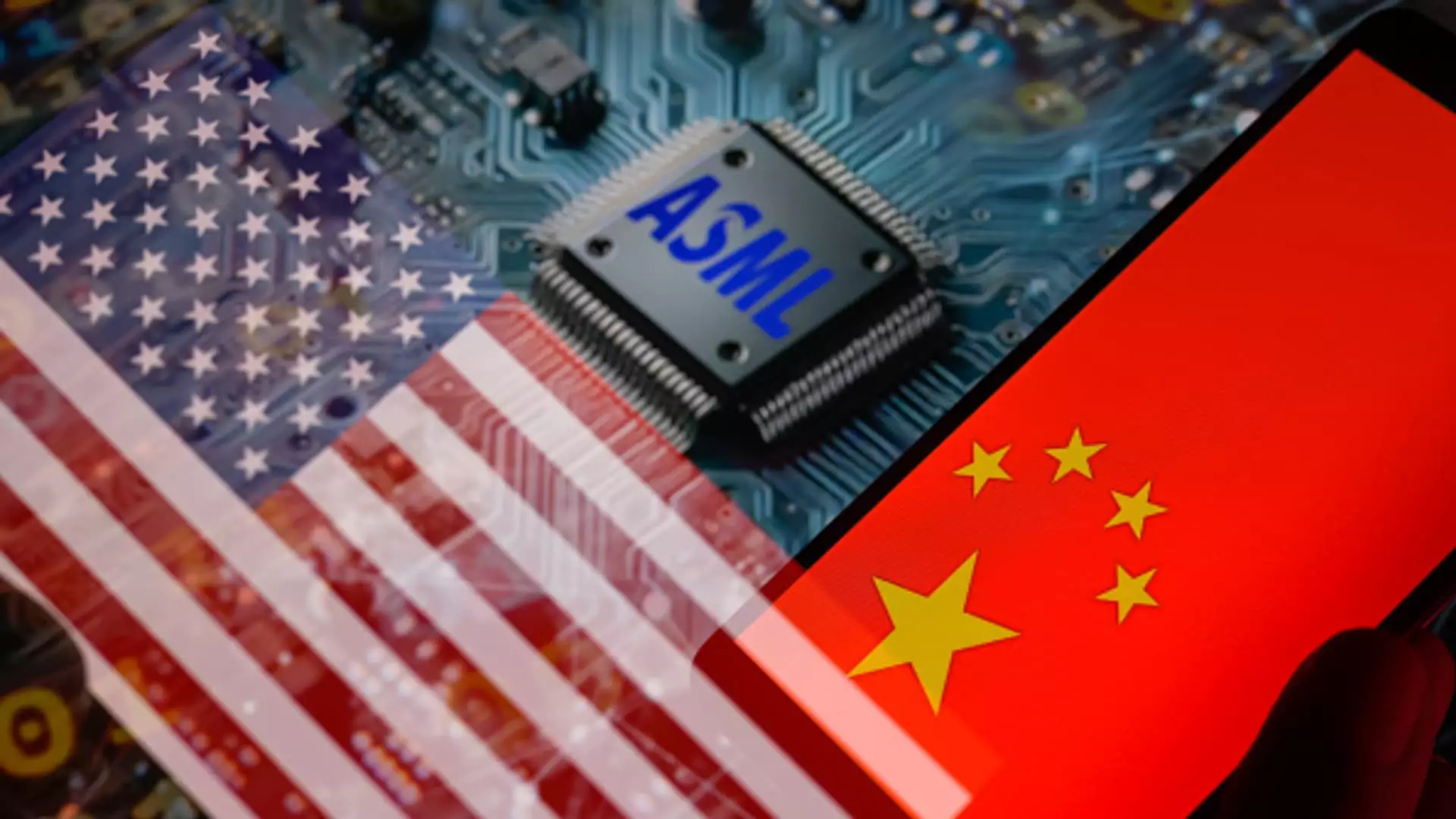On a significant day in October 2023, ASML, the Netherlands-based leader in advanced chip manufacturing equipment, revealed the repercussions that U.S. export restrictions would have on its sales in China. This disclosure was made during a pre-released earnings report, which projected its 2025 net sales to be between 30 billion euros and 35 billion euros, marking a downward adjustment from earlier forecasts. The implications of these restrictions are far-reaching, considering ASML’s critical role in the global semiconductor supply chain, particularly with its cutting-edge extreme ultraviolet (EUV) lithography machinery, which is fundamental for producing advanced chips utilized by renowned companies such as Nvidia and Taiwan Semiconductor Manufacturing Company (TSMC).
Despite ASML achieving third-quarter net sales of 7.5 billion euros—surpassing expectations—the disappointment came with its net bookings, which plummeted to 2.6 billion euros, starkly falling short of the LSEG consensus estimate of 5.6 billion euros. The reaction from investors was swift and harsh, leading ASML shares to drop as much as 16%, effectively erasing over $50 billion from the company’s market capitalization in just one day. This reaction underscores the fragile nature of investor confidence, especially as analysts scrutinize the underlying factors contributing to the decline in bookings.
ASML’s chief financial officer, Roger Dassen, highlighted geopolitical tensions as significant to the company’s outlook. As China’s economic relationship with technology suppliers increasingly comes under strain due to U.S. regulations, ASML anticipates that the portion of their order book derived from China will revert to more “normalized” levels. UBS analysts noted that the firm’s updated 2025 guidance represented expectations of a chilling 25% to 30% tumble in revenues from Chinese clients. The impact of geopolitical constraints on ASML’s sales strategy cannot be overstated, with significant players like Intel and Samsung influencing the firm’s revenue trajectory by delaying investments in new manufacturing facilities.
In the face of looming export controls, many Chinese semiconductor companies have taken preemptive measures to stockpile ASML’s deep ultraviolet (DUV) lithography tools, a step designed to ensure access to essential technology for chip production. While ASML has historically not sold its most advanced EUV machines to Chinese customers due to existing regulations, the rush to acquire DUV machines suggests a demand influx driven by uncertainty surrounding future access to these critical tools. Last year, China accounted for 29% of ASML’s sales; however, projections indicate a decline to approximately 20% by 2025, reflecting the tightening grip of export restrictions.
The Netherlands’ recent decision to expand export controls has positioned the Dutch government alongside the U.S. in regulating ASML’s export capabilities, effectively taking control of what machinery gets shipped to international clients. This regulatory change is critical, especially as ASML’s existing DUV machines facilitate the production of older-generation chips, primarily favored by Chinese firms. This makes the situation somewhat paradoxical: while restrictions ostensibly limit revenue potential, they inadvertently may have prompted an immediate surge in DUV equipment purchases.
Widespread analyst sentiment suggests a looming decline in ASML’s revenues from China. Bank of America analysts have articulated expectations for a staggering 48% drop in revenues from this crucial market by 2025, far exceeding previous predictions. The impact of U.S. export restrictions could resonate further, constraining demand not only for ASML’s machinery within China but possibly affecting potential sales in other international markets as well.
As Abishur Prakash of The Geopolitical Business pointedly remarked, ASML’s future is intricately linked to the dynamics playing out in China. The semiconductor industry is at a crossroads, where the separation of technology and trade between the U.S., China, and allied nations could lead ASML to see a marked reduction in equipment demand, reshaping the global landscape of semiconductor manufacturing.
Looking ahead, ASML must navigate an increasingly complex environment characterized by geopolitical strife and changing market demands. While short-term gains from stockpiling DUV machines provide some cushion against immediate losses, the long-term implications of reduced access to global markets weigh heavily on the company’s future revenue and competitive positioning. In this evolving semiconductor landscape, ASML’s ability to adapt and strategically align its operations with global regulatory shifts will be paramount to its resilience in the face of growing uncertainties.

